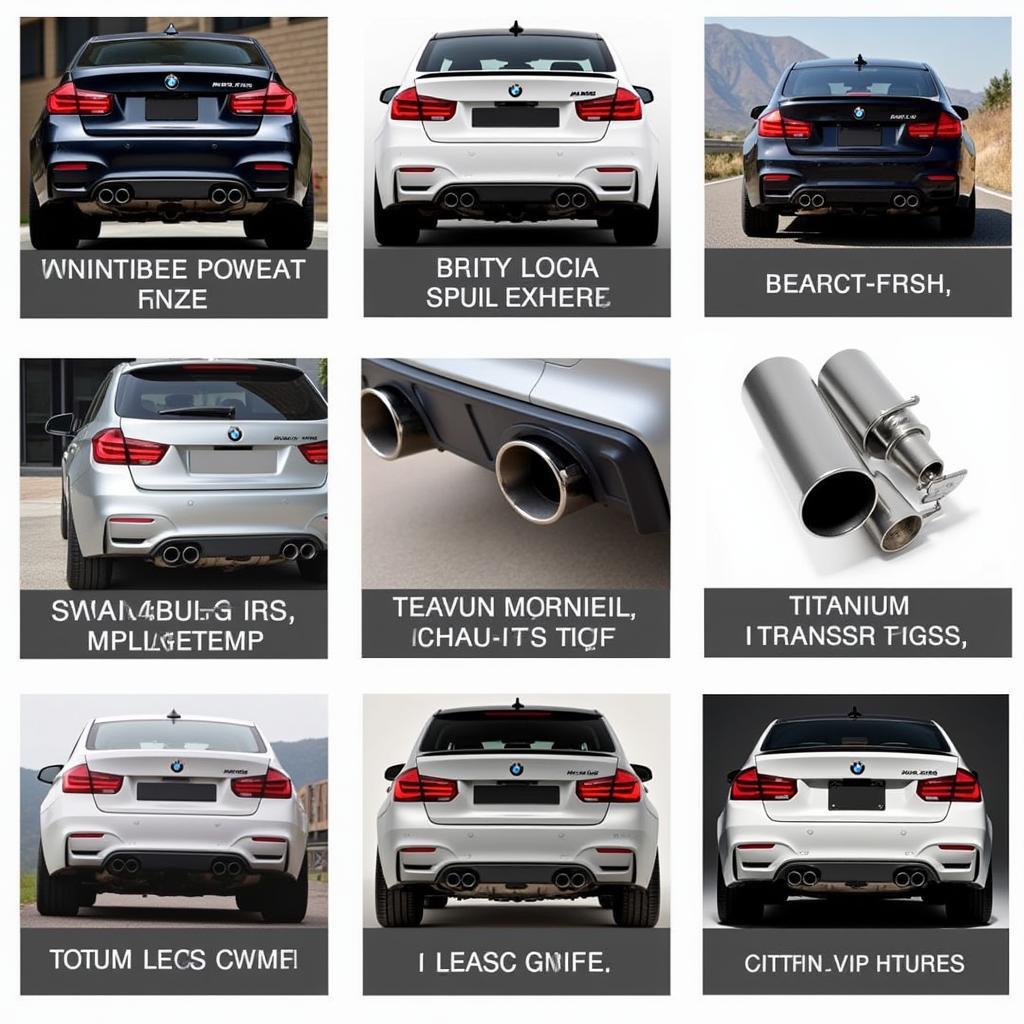The BMW M3 Competition’s exhaust sound is a symphony of performance, a key element that contributes to the overall driving experience. From a subtle purr at idle to an aggressive growl under acceleration, it’s a sound that resonates with enthusiasts. This article delves deep into the intricacies of the BMW M3 Competition exhaust sound, exploring its engineering, modifications, and the impact on performance and driving pleasure.
The Science Behind the Sound: How the BMW M3 Competition Exhaust Works
The BMW M3 Competition’s exhaust system is more than just a set of pipes; it’s a meticulously engineered system designed to optimize both performance and acoustics. The system starts with the exhaust manifold, which collects the exhaust gases from the engine cylinders. These gases then travel through the catalytic converters, which reduce harmful emissions. Next, the exhaust flows through the muffler, where the sound is shaped and refined. Finally, the gases exit through the exhaust tips, producing the characteristic BMW M3 Competition exhaust note.
The design of the exhaust system, including the diameter and length of the pipes, the internal structure of the muffler, and the placement of the resonators, all play a critical role in determining the final sound. The M3 Competition’s active exhaust system further enhances the auditory experience by allowing the driver to adjust the sound profile, ranging from a subdued hum for everyday driving to a full-throated roar for track days.
Modifying the Melody: BMW M3 Competition Exhaust Upgrades
For those seeking to personalize their M3 Competition’s sound, a variety of aftermarket exhaust options are available. These range from simple muffler deletes to complete cat-back systems. Cat-back exhaust systems replace the entire exhaust system from the catalytic converters back, offering the greatest potential for sound modification and performance gains. Axle-back systems, which replace only the rear section of the exhaust, offer a more subtle change.
When choosing an aftermarket exhaust, consider factors like material, construction, and sound profile. Stainless steel is a popular choice for its durability and corrosion resistance. Titanium offers a lighter weight and a unique sound signature. The sound profile can range from deep and throaty to high-pitched and aggressive.
 BMW M3 Competition Aftermarket Exhaust Options
BMW M3 Competition Aftermarket Exhaust Options
BMW M3 Competition Exhaust Sound: Performance Implications
While the exhaust sound is often associated with subjective preference, it can also have an impact on performance. A well-designed exhaust system can reduce backpressure, improving engine efficiency and potentially increasing horsepower and torque. However, it’s essential to choose an exhaust system that’s properly engineered and tuned for the M3 Competition’s engine to avoid negative impacts on performance.
“Choosing the right exhaust system is crucial. It’s not just about sound; it’s about optimizing performance and ensuring the longevity of your engine.” – David Miller, Automotive Performance Engineer.
Is the BMW M3 Competition Exhaust Sound Too Loud?
The perception of exhaust loudness is subjective. What one person finds exhilarating, another may find intrusive. The M3 Competition’s active exhaust system allows for some control over the sound level, but aftermarket modifications can significantly alter the sound profile. It’s essential to consider local noise regulations and the potential impact on neighbors and other drivers when choosing an exhaust system.
Conclusion: Finding the Perfect BMW M3 Competition Exhaust Sound
The BMW M3 Competition exhaust sound is a defining characteristic of this high-performance machine. Whether you prefer the refined roar of the stock system or the customized growl of an aftermarket upgrade, understanding the science behind the sound and the various modification options can help you find the perfect auditory experience to complement your driving style. The BMW M3 Competition exhaust sound truly unleashes the beast within.
FAQ
- What type of exhaust system does the BMW M3 Competition have? It has an active exhaust system that allows for adjustable sound profiles.
- Can I modify the exhaust sound of my BMW M3 Competition? Yes, various aftermarket exhaust systems are available.
- Will changing the exhaust affect my car’s performance? It can, both positively and negatively, depending on the chosen system.
- Is the BMW M3 Competition exhaust too loud? Loudness is subjective and can be controlled to some extent with the active exhaust system.
- What materials are used in aftermarket exhaust systems? Common materials include stainless steel and titanium.
- What is a cat-back exhaust system? It replaces the entire exhaust system from the catalytic converters back.
- What is an axle-back exhaust system? It replaces only the rear section of the exhaust system.
“Remember, your exhaust system is an extension of your driving personality. Choose wisely.” – Sarah Chen, Automotive Sound Engineer.
Need assistance with your BMW M3 Competition’s exhaust or any other diagnostic, programming, or remote installation needs? Contact us via Whatsapp: +1 (641) 206-8880, Email: CARDIAGTECH[email protected] or visit us at 276 Reock St, City of Orange, NJ 07050, United States. Our customer service team is available 24/7. We also offer services related to [link to other relevant articles on your website, e.g., BMW engine tuning, performance upgrades, etc.].

